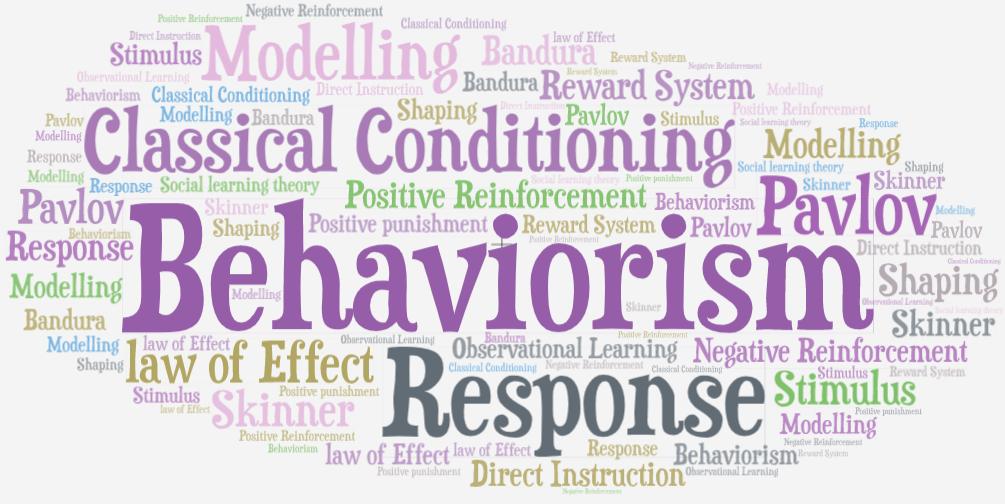History of Psychology Blog entry 2

Picture sourced from http://www.scienceklinic.com/
Behaviourism enjoyed a considerable rise in American Psychology in the 1920s. Prior to the rise of behaviourism, psychologist of the time were mostly using introspection to gain understanding around the human mind. Introspection is very subjective, researchers were finding it difficult to replicate studies, which affected the scientific strength of the findings. The behaviourist movement took around 15 years to grow.
Edward Lee Thorndike, was one of the first to adopt and document this mode of study. Thorndike’s work focused on the way animals learnt. Whilst studying at Columbia University, Thorndike observed cat’s, dogs and chicks in a puzzle box experiment. Thorndike concluded that animals learn ‘by trial and error and by reward and punishment’ (Pickren & Rutherford, 2010, p. 59). This led to the belief that animals learning was closely linked to learning by association, which was prompted by a stimulus.
Thorndike’s work was heavily criticized, his observational studies lacked ecological validity as the animals were enclosed in an unnatural environment. Despite these criticisms to Thorndike’s work, the laboratory approach became more popular. Moving the focus away from the mind and towards an analysis of behaviour.
Ivan Pavlov, a Russian Psychologist was pivotal in the move towards behaviourism. Pavlov was influenced by Ivan Sechenov, who believed strongly that the scientific route for psychology included using objective methods and ignoring consciousness (Pickren & Rutherford, 2010). Pavlov believed that thought evolved from a mental association which created a chain of events. If these events could be observed Pavlov believed they could be linked back to an external condition.
John Watson focused on animals and went on to work in the field of comparative psychology. Watson found it difficult to conduct studies using introspection and believed that they lacked scientific rigour. He went on to write a paper ‘Psychology as a behaviourist view it’. Watson tied together trends of the time to outline the behaviourist stance. He acknowledged the need to study behaviour in a social and cultural context (Woody & Viney 2017, p. 337).
Many psychologists agreed with Watson’s findings however, there was opposition to the elimination of introspection (Pickren & Rutherford, 2010). Many believed that introspection still played a large role in understanding conscious processes such as reasoning. Watson used his position as Professor of Psychology at John Hopkins to voice his stance on behaviourism and pushed that Psychology should have real-life applications.
Other schools of thought also moved towards behaviourism such as, Animal and Comparative psychology which was concerned with the functioning of the animal mind through observing behaviour (Pickren & Rutherford, 2010). In Philosophy, Ralph Barton Perry argued, that the mind may not necessarily be private. Perry believed that if consciousness is produced through experience then observing the experience should also give us insight into the mind. Perry’s thoughts challenged introspection and much like Pavlov took the stance that the human mind is on view through behaviours.
Behaviourism shaped research, by moving away from studying subjectively and moving towards observations and trying to understand habits and behaviours. Various psychologists and research contributed to the rise of behaviourism. Each one was influenced by the work of others. We can see this influence in modern-day techniques such as Cognitive Behavioral therapy. Behaviourism in its essence allowed psychologists to investigate observable behaviour in a scientific way.
Word Count 545
References;
Woody, W. D., & Viney, W. (2017) A History of Psychology; The Emergence of science and Applications (6th ed.). New York, N.Y: Taylor and Francis Group.
Pickren, W. & Rutherford, A. (2010) A History of Modern Psychology in Context. New Jersey, NJ: John Wiley & Sons.